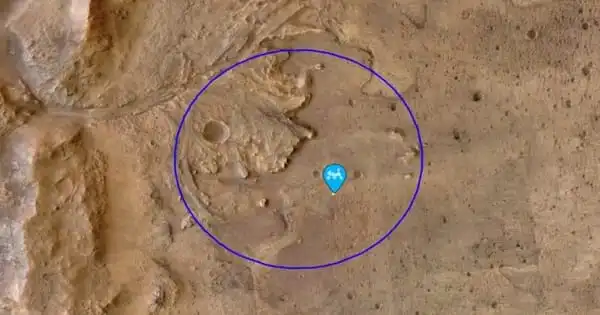Researchers from Cornell University and the American Museum of Natural History have discovered 2,034 neighboring star systems within a modest cosmic radius of 326 light-years that may locate Earth just by seeing our faint blue dot pass our sun.
Since the dawn of human civilization roughly 5,000 years ago, there have been 1,715 star systems that may have sighted Earth, with 319 more expected in the next 5,000 years.
Exoplanets orbiting these neighboring stars have a cosmic front-row seat to discover if Earth has life, according to a study published in Nature on June 23.
We wanted to know which stars have the right vantage point to see Earth, as it blocks the Sun’s light. And because stars move in our dynamic cosmos, this vantage point is gained and lost.
Lisa Kaltenegger
“From the exoplanets’ point-of-view, we are the aliens,” said Lisa Kaltenegger, professor of astronomy and director of Cornell’s Carl Sagan Institute, in the College of Arts and Sciences.
“We wanted to know which stars have the right vantage point to see Earth, as it blocks the Sun’s light,” she said. “And because stars move in our dynamic cosmos, this vantage point is gained and lost.”
Kaltenegger and astrophysicist Jackie Faherty, a senior scientist at the American Museum of Natural History and co-author of “Past, Present, and Future Stars That Can See Earth As A Transiting Exoplanet,” used data from the European Space Agency’s Gaia eDR3 catalog to figure out which stars enter and exit the Earth Transit Zone, and for how long.
“Gaia has provided us with a precise map of the Milky Way galaxy,” Faherty said, “allowing us to look backward and forward in time, and to see where stars had been located and where they are going.”
117 objects lie within about 100 light-years of the sun, and 75 of these objects have been in the Earth Transit Zone since commercial radio stations on Earth began broadcasting into space about a century ago, of the 2,034 star-systems passing through the Earth Transit Zone over the 10,000-year period examined.
“Our solar neighborhood is a dynamic place where stars enter and exit that perfect vantage point to see Earth transit the Sun at a rapid pace,” Faherty said.
There are seven known exoplanets among the 2,034 star systems in the list. Each of these worlds has or will have the ability to detect Earth, much as Earth’s scientists have discovered thousands of worlds orbiting other stars using the transit method.
Earth’s scientists can analyze the atmospheres of faraway exoplanets by observing them transit or cross their own sun. Exoplanets that have intelligent life can see Earth when it is backlit by the sun and see the chemical signs of life in our atmosphere.
The Ross 128 system, which is around 11 light-years away and has a red dwarf host star in the Virgo constellation, is the second-closest system with an Earth-size exoplanet (about 1.8 times the size of our planet). This exoworld’s occupants could have watched Earth transit our own sun for 2,158 years, beginning around 3,057 years ago; they lost their vantage point approximately 900 years ago.
At 45 light-years from Earth, the Trappist-1 system includes seven transiting Earth-size planets, four of which are in the star’s temperate, habitable zone. Exoplanets orbiting Trappist-1 have been detected, but they won’t be able to see us until their speed gets them into the Earth Transit Zone in 1,642 years. For 2,371 years, potential Trappist-1 system watchers will be seated in the cosmic Earth transit stadium seats.
“Our analysis shows that even the closest stars generally spend more than 1,000 years at a vantage point where they can see Earth transit,” Kaltenegger said. “If we assume the reverse to be true, that provides a healthy timeline for nominal civilizations to identify Earth as an interesting planet.”
The James Webb Space Telescope, which is due to launch later this year, will examine numerous transiting worlds in detail in order to describe their atmospheres and, eventually, seek for indications of life.
Breakthrough Starshot is an ambitious project that aims to send a nano-sized spacecraft toward the closest exoplanet discovered at Proxima Centauri, which is 4.2 light-years away from Earth, and completely describe it.
“One might imagine that worlds beyond Earth that have already detected us, are making the same plans for our planet and solar system,” said Faherty. “This catalog is an intriguing thought experiment for which one of our neighbors might be able to find us.”
This study was funded by the Carl Sagan Institute, the Heising Simons Foundation, and the Breakthrough Initiatives program.
















